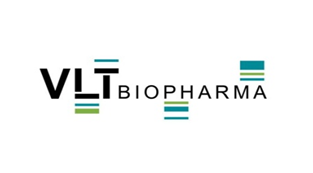I recently became aware of a new and exciting company working on a potential drug therapy in the Myotonic Dystrophy space. Valentia Biopharma S.L. is a biotechnology company born in August 2006 as a University of Valencia spin-off.
Tag Archives: drug
Myotonic Dysrophy Drugs Lead Candidates for Fast Track Autism Spectrum Disorder Testing
NIH officials announced yesterday that a new contract has been let with UCLA to form a network of researchers at various academic institutions to identify promising new and older drug compounds to treat Autism Spectrum Disorder (ASD) and to see if they merit additional investments.
The program is part of a new initiative called “Fast Fail” intends to vastly speed up the drug development process and reduce the costs of this drug development. Instead of taking years of work to see if a drug works this Fast Fail process could see results within weeks. As ASD is a huge issue for the USa and other countries this fast testing with myotonic dystrophy drugs could lead to treatments in a much faster time frame.
Dr. James McCraken who is leading the effort at UCLA states “The Whole idea is just getting much better in these early phases at identifying drugs that are going to be efficacious and safe and thereby speeding the development of effective new therapies and reducing the overall cost”
Researchers Race for Myotonic Dystrophy Cure
Myotonic Dystrophy may be the first of the muscular Dystrophy to have a definitive cure established. In the last few years researchers have isolated the issue they believe causes myotonic dystrophy. In the last couple of years therapies that have targeted this problem have reversed the disease in cell and animal models. This has set up a race now for researchers to refine the therapeutic compounds and begin with human trials to see if the animal to human therapeutic transfer works as it is believed to. Thus, this would lead to the first potential cure for a type of muscular dystrophy.
The Myotonic Dystrophy Foundation (MDF) in Menlo Park, CA has taken a lead in assisting researchers with moving forward with this disease elimination process with funding and assistance in establishing a patient registry. The MDF was the early funder of a new Research Collaborative effort lead by Charles Thorton out of the University of Rochester. The foundation has also been instrumental in educating patients and physicians in this complex and slowly progressing disease that results in premature death. A patient conference is planned for early November of 2013 in Houston, TX
Prosensa presenting at JP Morgan Healthcare Conference
Prosensa to Present at J.P. Morgan Healthcare Conference
LEIDEN, The Netherlands, Jan 03, 2013 (BUSINESS WIRE) — Prosensa, the private Dutch biopharmaceutical company focusing on RNA-modulating therapeutics for rare diseases with high unmet need, today announced that Hans Schikan, Chief Executive Officer, will be presenting at the 31st Annual J.P. Morgan Healthcare Conference in San Francisco.
Prosensa’s presentation is scheduled at the Westin St. Francis on Union Square at 4.30pm PST on Monday, January 7, 2013 and will provide a corporate update to the investment community. Prosensa’s lead compound (drisapersen), being developed by GlaxoSmithKline, is currently in late-stage phase III clinical trials for Duchenne muscular dystrophy.
–ENDS–
Notes to editors:
About Prosensa
Prosensa is an innovative Dutch biopharmaceutical company focused on the discovery, development and commercialization of RNA-modulating therapeutics correcting gene expression in diseases with significant unmet need, in particular neuromuscular disorders. Prosensa’s current focus is on developing treatments for Duchenne muscular dystrophy (DMD), Myotonic Dystrophy and Huntington’s disease. In 2009 Prosensa entered into a strategic alliance for part of its DMD exon skipping program with GlaxoSmithKline. Prosensa’s lead compound (drisapersen), being developed by GSK, is currently in late-stage phase III clinical trials. Prosensa is a privately held biopharmaceutical company, backed by a consortium of Abingworth, Gimv, Idinvest Partners, Life Sciences Partners, MedSciences Capital and New Enterprise Associates. For more information, please visit www.prosensa.com .
Prosensa won the 2012 Emerging Star Award at the European Mediscience Awards and was listed as a Fierce 15 Biotech Company.
SOURCE: Prosensa
Prosensa enquiries:
Luc Dochez +31 71 332 2085
or
Hans Schikan +31 71 332 2100
Media enquiries:
College Hill Life Sciences
Melanie Toyne-Sewell / Anastasios Koutsos / Henry Stanley
+44 20 7457 2020
or
Rebecca Skye Dietrich (US enquiries)
+1 857 241 0795
prosensa@collegehill.com
Florida Reseach finds new approach to treat Myotonic Dystrophy
Hope springs eternal when looking for treatments for this disease. There seems every month now that a new approach is in the works. This work by Dr. Disney and staff focuses on small molecules that will interface and destroy the RNA that are clogging the cells and causes these foci that seem instrumental in causing Myotonic Dystrophy. By targeting them and breaking them up this may give a treatment for the disease. Small molecules (Drugs) are pretty well known and understood by the medical community. So another approach. Lots of promise… but still we wait for more advances and clinical trials which are always in the future.
Richard
Scripps Florida Scientists Create New Approach to Destroy Disease-Associated RNAs in Cells
As Proof of Principle, Team Creates Molecule that Corrects Myotonic Dystrophy in Living Cells
JUPITER, FL, December 20, 2012 – Scientists from the Florida campus of The Scripps Research Institute (TSRI) have developed a new approach to alter the function of RNA in living cells by designing molecules that recognize and disable RNA targets. As a proof of principle, in the new study the team designed a molecule that disabled the RNA causing myotonic dystrophy.
The study, published online ahead of print on December 20, 2012 by the journal Angewandte Chemie, reports the creation of small molecules that recognize disease-associated RNAs, targeting them for destruction. Since small molecules are cell-permeable, the approach could have benefits over traditional methods of targeting RNAs for degradation, such as antisense or RNA interference (RNAi).
“We’re excited about these results,” said Matthew Disney, an associate professor at TSRI who pioneered the research. “This approach may allow for the inactivation of many cellular RNAs by small molecules and potentially lead the way to a whole range of novel therapeutics.”
It’s well known that gene expression can be controlled by triggering the degradation of messenger RNA—the blueprint for the production of proteins. This is accomplished through the recruitment of compounds that cleave or split the molecule. While several compounds can induce RNA cleavage in vitro, this has not been accomplished efficiently in living cells—until now.
In the new study, Disney and Research Associate Lirui Guan attached a rationally designed small molecule that targets the RNA that causes myotonic dystrophy type 1 with a molecule that produces hydroxyl radicals. Upon the small molecule’s recognition of the target, a hydroxyl radical was released that cleaved the disease-associated RNA, alleviating the disease-associated defects. Disney noted that, despite the compound’s producing a highly reactive species, the compounds are non-toxic at relatively effective doses.
The team accomplished this feat through what Disney calls a bottom-up approach to targeting RNA.
“We first identified the preferred RNA structural elements or motifs that bind to small molecules,” he said. “Then we looked at these elements in RNAs that cause disease and designed a binding molecule with increased affinity and specificity for those elements.”
Myotonic dystrophy type 1 involves a type of RNA defect known as a “triplet repeat,” a series of three nucleotides repeated more times than normal in an individual’s genetic code, resulting in a number of protein splicing abnormalities. Symptoms of this variable disease can include wasting of the muscles and other muscle problems, cataracts, heart defects and hormone changes.
The applications for this new approach could include cancer treatment in conjunction with other therapies, Disney said. The approach could also be used to create chemical probes of RNA function or to develop tools to probe RNA structure—provided, of course, that the RNA-binding preferences of the small molecules involved were well defined.
The study, “Small Molecule-Mediated Cleavage of RNA in Living Cells,” was supported by the National Institutes of Health (Grant number: R01-GM079235) and TSRI. For more information on the study, see http://onlinelibrary.wiley.com/doi/10.1002/anie.201206888/abstract.



